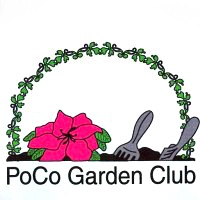
*September 2023 Update:
Please see some new information at the end of this article.*
You may have seen posters at local garden shops about an invasive “bad bug”, the Japanese Beetle. It was found in Vancouver, False Creek area, in 2017 and has now reached our neighbours in Port Coquitlam and Burnaby. This year, the Invasive Species Council of BC increased its surveillance in the Lower Mainland to 6000 traps! Restrictions now apply year-round to the movement of outdoor plants with soil or soil-related matter. Although this beetle is not a risk to humans or animals, it feeds on more than 250 species including fruit trees, roses, grapevines, and many landscape and food plants.
I urge you to read the full PDF publication August 9, 2023 by the ISCBC (used for this article).
The three main identifying characteristics are: metallic green head, metallic copper-brown wing coverings, white tufts of hair around the abdomen. Adult beetles are around 1 cm long, with a rounded oval shape and a hard shiny green exoskeleton and brown wing covers. The best defining characteristic of this beetle is the six tufts of white hairs running down either sides of the abdomen– no other beetle in BC has this pattern.

The adult beetles feed on leaves during sunny summer days, chewing between the veins and leaving a lacey network. Eggs are laid in grassy areas and the larva feed on roots until the cool weather. They overwinter and begin feeding again in spring.
Some important tips are: “shake it before you take it” by checking all plants, soil, and even your clothing and picnic basket for hitchhikers, and if you see a suspicious beetle or evidence of lace-like damage on foliage, capture specimens or photograph evidence and send the information to BCPF.Japanese.Beetle@inspection.gc.ca
A special “thank you” goes to Mylene for making our garden club aware of this important issue.
My name is Mylene, and I am an Invasive Species Ambassador with the Invasive Species Council of BC’s (ISCBC) Science and Research Team. My team and I are contacting special interest groups and programs to ask for your help to spread awareness about the Japanese beetle (Popillia japonica) and provide updates on the 2023 collaborative eradication program. We are interested in providing presentations and info tables this summer to share information, resources, and strategies to managing, identifying, and reporting Japanese beetle.
As you might know, Japanese beetle is an invasive pest that feeds on turf grass and over 250 plant species. It was first detected in the False Creek area of Vancouver in 2017 and has the potential to be extremely damaging to the agricultural and horticultural sectors in BC. We have partnered with the Cities of Vancouver, Burnaby, and Port Coquitlam, the Canadian Food Inspection Agency (CFIA), and other stakeholders to stop the spread of the Japanese beetle in the Greater Vancouver Area. So far, the program has been very successful, however, in 2022 there was an increase in detections in Burnaby and Port Coquitlam, highlighting the need for further outreach and awareness. With your help to spread the word, we want to continue the success of the program and achieve full eradication of the beetle.

RELATED LINKS
BC Invasives
https://bcinvasives.ca/invasives/japanese-beetle/
Canada Food Inspection Agency – Popilla Japonica (Japanese Beetle) fact sheet
https://inspection.canada.ca/plant-health/invasive-species/insects/japanese-beetle/fact-sheet/eng/1328165101975/1328165185309
How to Control Japanese Beetle – Heeman’s (Ontario)
https://www.heeman.ca/garden-guides/japanese-beetle-control/
*September 2023 Update: new information.*


Pingback: Invasive Insects in the Lower Mainland by Diane Watson | PoCo Garden Club